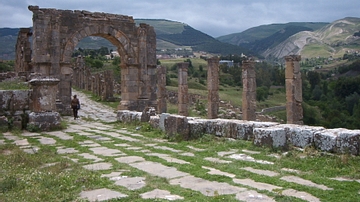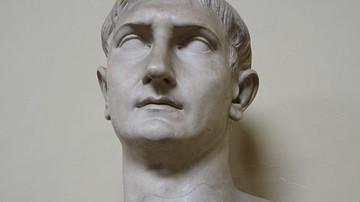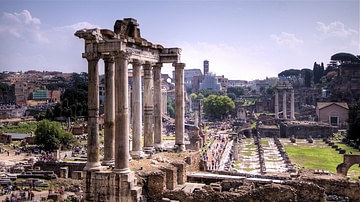Search
Did you mean: Basil I?
Search Results

Article
The Library of Hadrian, Athens
The Library of Hadrian (aka Hadrian's Library) in Athens was constructed circa 132-134 CE as part of Roman Emperor Hadrian's grand re-building plan for the city. The library was the largest in Athens and with its columned façade and high...

Article
A Visitor's Guide to Pompeii
Visitors to Naples and its surrounding area could be overwhelmed by the number of archaeological wonders to see. Buried for centuries beneath tons of volcanic ash and debris, the archaeological sites scattered along the coast of Naples are...

Article
The Heritage of Cuicul
There are few places on earth where we can say that these stones, on which we are standing, are the same stones where feet rested centuries before. These places are important. We walk in the Roman Forum, we explore the ruins of the Flavian...

Video
Sarcophagus of Junius Bassus, marble, 359 C.E.
More free lessons at: http://www.khanacademy.org/video?v=UjX4ExCixWY Sarcophagus of Junius Bassus, marble, 359 C.E. (Treasury of Saint Peter's Basilica) Please note that due to photography restrictions, the images used in the video above...

Definition
Martin Luther
Martin Luther (l. 1483-1546) was a German priest, monk, and theologian who became the central figure of the religious and cultural movement known as the Protestant Reformation. Even though earlier reformers had expressed Luther's views, his...

Definition
Constantinople
Built in the seventh century BCE, the ancient city of Byzantium proved to be a valuable city for both the Greeks and Romans. Because it lay on the European side of the Strait of Bosporus, the Emperor Constantine understood its strategic importance...

Definition
Trajan
Trajan, or Marcus Ulpius Traianus, was Roman emperor from 98 to 117 CE. Known as a benevolent ruler, his reign was noted for public projects which benefitted the populace such as improving the dilapidated road system, constructing aqueducts...

Definition
Donatello
Donatello (c. 1386-1466 CE), full name Donato di Niccolo di Betto Bardi, was an Italian Renaissance artist best known for his sculptures such as the striking bronze figure of David now in the Bargello museum of his native Florence. Donatello...

Definition
Roman Forum
The Roman Forum or Forum Romanum of ancient Rome was the bustling religious, administrative, legal, and commercial heart of the city from the 7th century BCE onwards. Made increasingly grandiose and ceremonial in function by the Imperial...

Definition
Filippo Brunelleschi
Filippo Brunelleschi (1377-1446 CE) was an Italian Renaissance architect, goldsmith, and sculptor, who is most famous for his work on the cathedral of Florence and its impressive soaring brick dome, completed in 1436 CE. Considered one of...